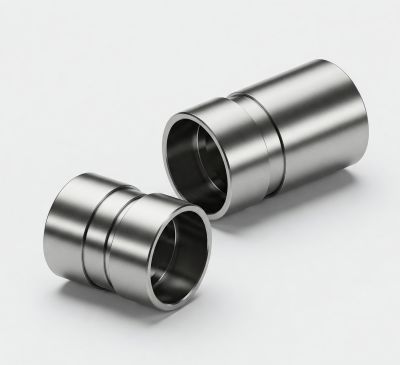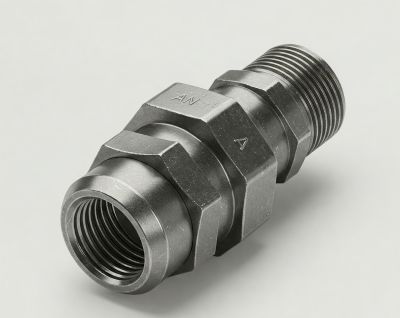Connecting a double flare to an AN (Army-Navy) fitting isn’t as straightforward as it may seem, especially for those unfamiliar with the key differences between flare standards. Whether you’re upgrading a brake system, fuel line, or hydraulic setup, understanding how these fittings work together is crucial.
You might need to connect a double flare to an AN fitting when retrofitting OEM lines to aftermarket components, especially in performance or custom automotive builds. The issue? They don’t naturally match up, so using the correct adapters and following proper installation techniques is essential.
These types of connections are commonly found in brake line systems, fuel delivery systems, and high-pressure hydraulic setups
Getting it wrong could mean leaks, loss of pressure, or even system failure. Let’s walk through exactly how to do it the right way.
Understanding the Basics
What is a Double Flare?
A double flare is a method of flaring tubing—usually steel or stainless steel—where the end of the tube is folded over itself and flared twice. This creates a more durable and crack-resistant seal compared to a single flare.
➡️ Flare angle: 45°, based on the SAE (Society of Automotive Engineers) standard.
➡️ Common uses: Brake lines, fuel lines, transmission cooler lines.
What is an AN Fitting?
AN fittings are derived from U.S. military specifications and are now widely used in high-performance automotive and aerospace applications. They’re known for their reliability and sleek, leak-proof design.
➡️ Flare angle: 37°, according to AN (Army-Navy) standards.
➡️ Common uses: Fuel systems, oil lines, racing hydraulics.
Key Differences Between Double Flare and AN Fittings
➡️ Flare Angles: SAE = 45°, AN = 37°. This is the most critical incompatibility.
➡️ Thread Types: AN threads follow a different standard and are not designed to seal against a 45° flare.
➡️ Sealing Surface: AN fittings seal on the flare face, not the threads, and only work with matching 37° flares.
Bottom line: You can’t safely connect a double flare to an AN fitting directly without an adapter.
Tools & Materials Needed
Before starting your connection, gather the following:
1. Double flared tubing (steel or stainless steel)
2. AN fittings (male or female as required)
3. SAE 45° to AN 37° adapter
4. Flare nut wrench or line wrench
5. Tubing cutter, deburring tool, and flaring tool (if making new flares)
6. Thread sealant or Teflon tape (optional, depending on the adapter type)
Choosing the Right Adapter
To bridge the gap between a 45° double flare and a 37° AN fitting, you’ll need a flare union adapter.
Key Considerations:
➡️ One end should accept SAE 45° flare
➡️ The other end should be a 37° AN male or female
➡️ Match the tube size and thread pitch
Examples of Common Adapters:
➡️ 3/16″ SAE Female to -3 AN Male
➡️ 1/4″ SAE Female to -4 AN Male
Tips for Success:
➡️ Use a thread pitch gauge to match threads.
➡️ Always check both flare angles and thread sizes.
➡️ Buy from reputable brands (Earl’s, Russell, Aeroquip, etc.)
Step-by-Step Installation Guide
Here are the 6 steps to install the adapter properly:
Step 1: Inspect the Tubing and Flare
Make sure the double flare is clean, crack-free, and properly formed. Any imperfections can cause leaks.
Step 2: Select the Correct Adapter
Match the sizes and flare types. The adapter should state the two standards it connects (SAE 45° and AN 37°).
Step 3: Apply Sealant (If Required)
Some adapters are designed to seal without additional help. If your adapter includes tapered threads, apply thread sealant or Teflon tape—but never on the flare sealing surface.
Step 4: Hand-Tighten the Connection
Align the fittings and hand-tighten carefully to avoid cross-threading.
Step 5: Torque to Specification
Use a torque wrench or flare nut wrench to tighten according to the fitting manufacturer’s specs. Avoid over-tightening, which can distort the flare or damage the fitting.
Step 6: Pressure Test the Connection
Once assembled, run fluid or air pressure through the line and check for leaks. Monitor under real operating conditions if possible.
Troubleshooting Tips
Problem: Connection is Leaking
➡️ Ensure correct flare angle on both sides.
➡️ Check for nicks or debris on flare surfaces.
➡️ Verify torque spec is met.
Problem: Threads Won’t Start
➡️ Make sure thread sizes and pitches are compatible.
➡️ Look for cross-threading or damaged threads.
Problem: Still Leaking?
The flare may be improperly formed—consider re-flaring the line.
Pro Tips & Best Practices
1. Never force a 45° flare into a 37° fitting. Use a proper adapter.
2. Keep a thread pitch and flare gauge in your toolbox.
3. Avoid bending lines near fittings. Stress on the joint can cause leaks.
4. Always route lines away from heat and vibration sources.
Conclusion
Connecting a double flare to an AN fitting is totally doable, with the right adapter and proper technique. Always match flare angles and thread types, and never skip a pressure test after installation. Done right, your connection will be safe, secure, and leak-free.
Looking for different hydraulic fittings and adapters? We’ve got you covered below:
3. SAE Fittings
Post time: May-19-2025



